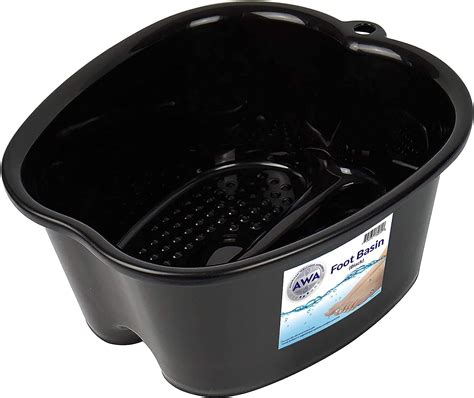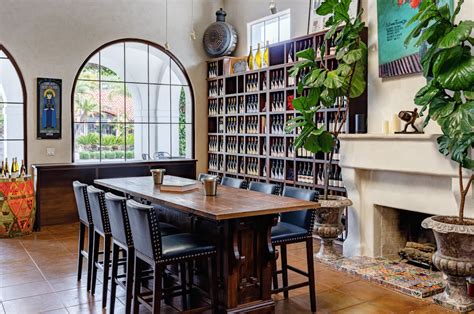The art of pairing food with wine and beer is a nuanced and complex process that requires a deep understanding of the flavors, textures, and aromas of both the cuisine and the beverages. When it comes to crafting the perfect union between food and drink, the team at Mad & Vin is dedicated to providing expert guidance and recommendations. In this comprehensive guide, we will delve into the world of food and wine pairing, exploring the fundamental principles, expert techniques, and innovative approaches that will elevate your dining experience.
Understanding the Basics of Food and Wine Pairing
At its core, food and wine pairing is about finding harmony between the flavors and textures of the dish and the characteristics of the wine. This involves considering factors such as the type of cuisine, the cooking methods used, the ingredients and their flavors, and the overall balance of the meal. For instance, a delicate fish dish might be paired with a crisp and refreshing white wine, while a rich and hearty red meat dish might be matched with a full-bodied red wine.
One of the most important principles in food and wine pairing is the concept of balance. The goal is to achieve a harmonious balance between the flavors of the food and the wine, where neither overpowers the other. This can be achieved through complementary or contrasting flavors. Complementary pairing involves matching similar flavors in the food and wine, such as pairing a dish with herbal notes with a wine that also has herbal undertones. Contrasting pairing, on the other hand, involves pairing opposite flavors to create a interesting and dynamic taste experience.
Exploring Beer Pairing
Beer, with its vast array of styles and flavors, offers a unique and exciting dimension to the world of food pairing. From the crisp, refreshing lagers perfect for spicy dishes to the robust, complex stouts that pair beautifully with rich desserts, beer can complement and enhance the flavors of food in ways that wine cannot. For example, a hoppy IPA can cut through the richness of a fatty meat dish, while a malty amber ale can complement the sweetness of a caramelized onion tart.
When pairing beer with food, it’s essential to consider the style of beer and its characteristics. The bitterness, sweetness, and hops level in beer can all impact how it pairs with different dishes. For instance, a beer with high bitterness can cut through the richness of a dish, while a beer with low bitterness can complement delicate flavors.
Expert Techniques for Elevating Your Pairing Game
Start with the Food: The first step in any pairing is to understand the dish. Consider its main ingredients, the cooking method, and the sauce or seasonings used. This will give you a clear direction on the type of wine or beer that will complement it best.
Consider the Weight of the Dish: Lighter dishes, such as salads or seafood, often pair well with lighter wines or beers. Conversely, heavier dishes like red meats or rich sauces demand fuller-bodied wines or beers.
Balance Flavor Profiles: If your dish is spicy, a wine or beer with a touch of sweetness can provide a nice balance. Similarly, fatty foods can be cut through with acidic or bitter beverages.
Don’t Forget About Texture: The texture of food can also influence pairing decisions. For example, crunchy foods can be beautifully complemented by a wine with a smooth, velvety texture.
Experiment and Take Notes: The world of food and wine pairing is vast and highly subjective. What works for one person may not work for another. Experimenting with different pairings and keeping notes can help you develop your own palate and preferences.
Innovative Approaches to Food and Wine Pairing
In recent years, there has been a shift towards more innovative and unconventional approaches to food and wine pairing. This includes pairing wine with non-traditional dishes, such as pairing a sweet dessert wine with a spicy Asian dish. It also involves experimenting with different wine styles, such as natural wines or orange wines, which can add a unique twist to traditional pairings.
Another innovative approach is to consider the cultural and historical context of the cuisine and the wine. For example, pairing a traditional Italian dish with a wine from the same region can add a deeper layer of meaning and authenticity to the pairing.
Practical Application Guides
To put these principles and techniques into practice, consider the following guides:
For Beginners: Start with simple pairings such as pasta with tomato sauce and a light-bodied red wine, or grilled chicken with a crisp white wine. As you become more confident, experiment with more complex dishes and beverages.
For the Adventurous: Don’t be afraid to try unusual pairings. For example, pairing a sweet wine with a savory dish can create a fascinating contrast of flavors. Similarly, experimenting with different beer styles can lead to surprising and delightful combinations.
For Special Occasions: Consider the theme or atmosphere of the occasion. A formal dinner might call for a classic pairing such as champagne and caviar, while a casual barbecue might be more suited to a refreshing beer and grilled meats.
FAQ Section
What is the basic principle of food and wine pairing?
+The basic principle of food and wine pairing is to achieve a harmonious balance between the flavors of the food and the wine. This can be achieved through complementary or contrasting flavors, and by considering factors such as the type of cuisine, cooking methods, and ingredients.
How do I choose the right wine for a dish?
+Choosing the right wine for a dish involves considering the main ingredients, cooking method, and sauce or seasonings used. It's also important to think about the weight of the dish, with lighter dishes pairing well with lighter wines and heavier dishes with fuller-bodied wines.
Can beer be paired with food as effectively as wine?
+Yes, beer can be paired with food as effectively as wine. With its wide range of styles and flavors, beer offers a versatile and exciting option for pairing. The key is to consider the style of beer and its characteristics, such as bitterness and sweetness, and how these will complement or contrast with the flavors of the dish.
What are some tips for pairing beer with food?
+Some tips for pairing beer with food include considering the style of beer and its characteristics, balancing flavor profiles, and thinking about the texture of the food. It's also important to experiment and find what works best for your personal taste preferences.
How can I elevate my food and wine pairing game?
+To elevate your food and wine pairing game, consider starting with the food and understanding its main ingredients and cooking method. Also, think about the weight of the dish, balance flavor profiles, and don't forget about texture. Experimenting and taking notes can also help you develop your own palate and preferences.
What are some innovative approaches to food and wine pairing?
+Some innovative approaches to food and wine pairing include pairing wine with non-traditional dishes, experimenting with different wine styles, and considering the cultural and historical context of the cuisine and the wine. These approaches can add a unique twist to traditional pairings and create a more exciting and dynamic dining experience.
Conclusion
The world of food and wine pairing is a complex and nuanced realm, filled with endless possibilities and opportunities for exploration. By understanding the fundamental principles, expert techniques, and innovative approaches outlined in this guide, you can elevate your dining experience and discover new and exciting ways to combine food and drink. Whether you’re a seasoned connoisseur or just beginning your journey, the key to mastering food and wine pairing is to remain curious, keep an open mind, and always be willing to try something new. With practice, patience, and a passion for culinary exploration, you can unlock the full potential of food and wine pairing and enjoy a richer, more satisfying dining experience.



